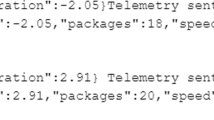Abstract
Assembly planning plays a major role in the manufacturing industry. In order to reduce computational complexity, this paper presents a knowledge-based approach to the assembly sequence planning problem. The CSBAT (connection-semantics-based assembly tree) hierarchy proposed in this paper provides an appropriate way to consider both geometric information and non-geometric knowledge. In this research, the typical or standard CSBAT is applied to a given assembly problem. The structure of the KBASP (knowledge-based assembly sequence planning system) is proposed and there are different ways to construct plans for a CSBAT: by retrieving the typical base, by retrieving the standard base, and by geometric reasoning. The approach proposed in this paper can generate assembly sequences for each CSBAT directly, without the problem of merging plans for different child CSBATs. The application shows that the knowledge-based approach can reduce the computational complexity drastically and obtain more feasible and practical plans.
Similar content being viewed by others
References
De Fazio TL, Whitney DE (1987) Simplified generation of all mechanical assembly sequences. IEEE Trans Robot Autom 3(6):640–658
Wilson RH (1995) Minimizing user queries in interactive assembly planning. IEEE Trans Robot Autom 11(2):308–312
Homem de Mello LS, Sanderson AC (1991) A correct and complete algorithm for the generation of mechanical assembly sequences. IEEE Trans Robot Autom 7(2):228–240
Baldwin DF, Abell TE, Lui M-CM, De Fazio TL, Whitney DE (1991) An integrated computer aid for generating and evaluating assembly planning. IEEE Trans Robot Autom 7(1):78–94
Zhang B, Zhang L (1991) A new algorithm for planning mechanical assembly sequences. Chinese J Comput 14(8):561–569 (in Chinese)
Lee (1994) Subassembly identification and evaluation for assembly planning. IEEE Trans Syst Man Cybern 24(3):493–503
Ataie-Ashtiani B, Lockington DA, Volker RE, Eng T-H, Ling Z-K, Olson W, McLean C (1997) Feature-based assembly modeling and sequence generation. Comput Ind Eng 36(1):17–33
Chakrabarty S, Wolter J (1997) A structure-oriented approach to assembly sequence planning. IEEE Trans Robot Autom 13(1):14–29
Swaminathan A, Barber KS (1996) An experience-based assembly sequence planner for mechanical assemblies. IEEE Trans Robot Autom 12(2):252–266
Yin ZP, Ding H, Li HX, Xiong YL (2003) A connector-based hierarchical approach to assembly sequence planning for mechanical assemblies. Comput Aided Des 35(1):37–56
Fan J, Dong (2001) KVAS: a knowledge-based virtual assembly system. In: Proceedings of the IEEE International Conference on Systems, Man, and Cybernetics, Taipei, Taiwan, October 2001, pp 1041–1046
Marian RM, Luong LHS, Abhary K (2003) Assembly sequence planning and optimisation using genetic algorithms: part I. Automatic generation of feasible assembly sequences. Applied Soft Comput J 2(3):223–253
Chen R-S, Lu K-Y, Yu S-C (2002) A hybrid genetic algorithm approach on multi-objective of assembly planning problem. Eng Appl Artif Intell 15(5):447–457
Chen CLP, Pao YH (1993) An integration of neural network and rule-based systems for design and planning of mechanical assemblies. IEEE Trans Syst Man Cybern 23(5):1359–1371
Chen Z, Zhang B (1991) The generation of assembly precedence constraint based on knowledge. J Softw 9:487–495 (in Chinese)
Zha XF, Du H (2002) A PDES/STEP-based model and system for concurrent integrated design and assembly planning. Comput Aided Des 34(14):1087–1110
Dong T, Tong R, Dong J, Zhang L (2004) Knowledge-based assembly sequence planning system. In: Proceedings of the 8th International Conference on Computer Supported Cooperative Work in Design (CSCWD 2004), Xiamen, China, May 2004, pp 516–521
Dong T, Tong R, Zhang L, Dong J (2005) A collaborative approach to assembly sequence planning. Adv Eng Inform 19(2):155–168
Gui J-K, Mäntylä M (1994) Functional understanding of assembly modeling. Comput Aided Des 26(6):435–451
Kanai S, Takahashi H, Makino H (1996) ASPEN: computer-aided assembly sequence planning and evaluation system based on predetermined time standard. Annals CIRP 45(1):35–39
Pelillo M., Siddiqi K, Zukker S (1999) Matching hierarchical structures using associated graphs. IEEE Trans Pattern Anal Mach Intell 21(11):1105–1120
Xu X, Liu W, Jin X, Sun Z (2002) Sketch-based user interface for creative tasks. In: Proceedings of the 5th Asia-Pacific Conference on Computer Human Interaction (APCHI 2002), Beijing, China, November 2002, pp 560–570
Chiu HP, Tseng DC (1997) Invariant handwritten Chinese character recognition using fuzzy min-max neural networks. Pattern Recog Lett 18(5):481–491
Suganthan PN, Yan H (1998) Recognition of handprinted Chinese characters by constrained graph matching. Image Vis Comput 16(3):191–201
Yeung M, Yeo BL, Liu B (1998) Segmentation of video by clustering and graph analysis. Comput Vis Image Underst 71(1):94–109
Ahmadyfard AR, Kittler J (2002) Using relaxation technique for region-based object recognition. Image Vis Comput 20(11):769–781
Author information
Authors and Affiliations
Corresponding author
Rights and permissions
About this article
Cite this article
Dong, T., Tong, R., Zhang, L. et al. A knowledge-based approach to assembly sequence planning. Int J Adv Manuf Technol 32, 1232–1244 (2007). https://doi.org/10.1007/s00170-006-0438-1
Received:
Accepted:
Published:
Issue Date:
DOI: https://doi.org/10.1007/s00170-006-0438-1




